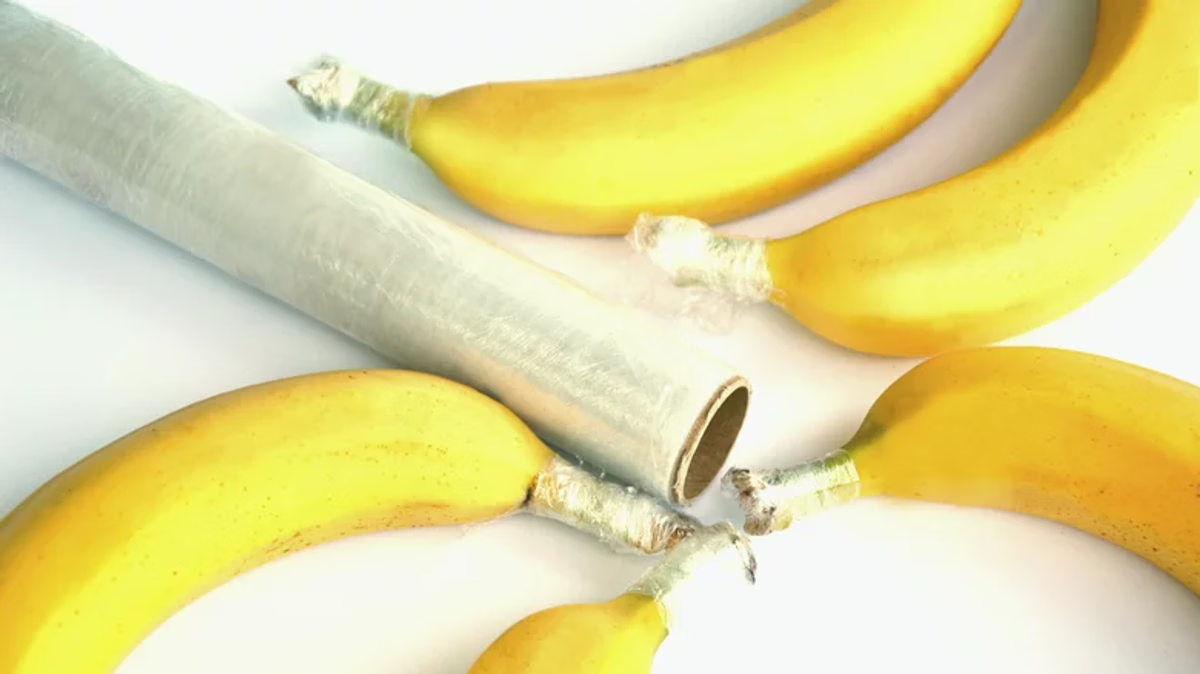Bananas are a popular and nutritious fruit, but they spoil easily if not stored correctly. They ripen quickly when exposed to air, high temperatures, or sunlight, causing the skin to darken and the flesh to soften. This is a few easy ways to store ripe bananas to prevent browning.

Effective Ways to Store Ripe Bananas at Room Temperature
To store ripe bananas at room temperature, try these two methods:
1. Wrap Bananas in Newspaper:
Wrapping bananas individually in newspaper reduces exposure to air and light, stabilizes the temperature, and slows the ripening process. Avoid wrapping the entire bunch to prevent bruising, and keep them in a cool, dry spot out of direct sunlight. This method can keep bananas fresh for about 3-5 days.
Steps:
• Wrap each banana in newspaper.
• Place the wrapped bananas in a basket or tray in a cool area.
2. Hang Bananas:
Hanging bananas prevents them from getting squashed and keeps their skins from darkening due to surface contact. Choose a dry, cool area away from other fruits to avoid accelerated ripening from ethylene gas. This method preserves bananas for 4-7 days.
Steps:
• Hang bananas from a hook or string.
• Place them on a rack in a suitable location.

How to Store Bananas in the Refrigerator
For longer storage, refrigerate ripe bananas. This method can keep them fresh for around 7-10 days. Use zip-top bags, plastic wrap, or an airtight container for better results.
Store in Zip-Top Bags:
Place bananas in a zip-top bag to limit air exposure. Choose bags with small holes rather than completely airtight ones to prevent pressure buildup. Keep them in the refrigerator’s cool compartment, not the freezer, to avoid freezing.
Steps:
1. Arrange bananas in a zip-top bag, then seal it.
2. Place the bag in the refrigerator’s cool compartment, ideally at 2-3°C.

Store in Plastic Wrap:
Wrapping bananas in plastic wrap reduces air exposure and limits bacterial growth, slowing the browning process.
Steps:
1. Wrap bananas individually or in a bunch with plastic wrap.
2. Store them in the refrigerator’s cool compartment at 2-3°C, avoiding the freezer.
Use an Airtight Container:
Airtight containers help keep bananas moist and reduce air exposure. Choose a container with air vents to avoid pressure buildup.
Steps:
1. Place bananas in a single layer in the container.
2. Open the air vent if available, then place the container in the refrigerator’s cool compartment.

Freezing Bananas
For extended storage, you can freeze bananas. Depending on their ripeness, frozen bananas can last for months. Here are some ways to freeze bananas:
• Whole Bananas: Pack whole bananas in zip-top bags and place them in the freezer. This keeps them fresh for 3-4 months, though the peel may darken. After thawing, they’re suitable for direct consumption or use in recipes.
• Peeled Bananas: Peeled bananas are prone to mushiness, so pack them in zip-top bags or a container lined with wax paper. This method preserves bananas for about 2 months.
Tips:
• Label the date on the bags for reference.
• Thaw frozen bananas for 15-20 minutes before use. They’re ideal for smoothies, cakes, and other recipes.

Additional Tips for Preserving Ripe Bananas
• Choose bananas with green skins and not fully ripe: This ensures that bananas are preserved longer. Because ripe yellow bananas will spoil faster.
• Separate bananas from the bunch and do not place them with other fruits: Storing a bunch of bananas together with other fruits will produce more ethylene gas, causing bananas to ripen faster.
• Lightly coat banana skins with cooking oil: Because oil helps prevent air from entering and keeps bananas moist, this action will create a protective layer for bananas.
These are effective ways to store ripe bananas safely. Proper storage can reduce costs and prevent food waste. Quality preservation tools and refrigerators are essential; poor equipment can lead to faster spoilage.

